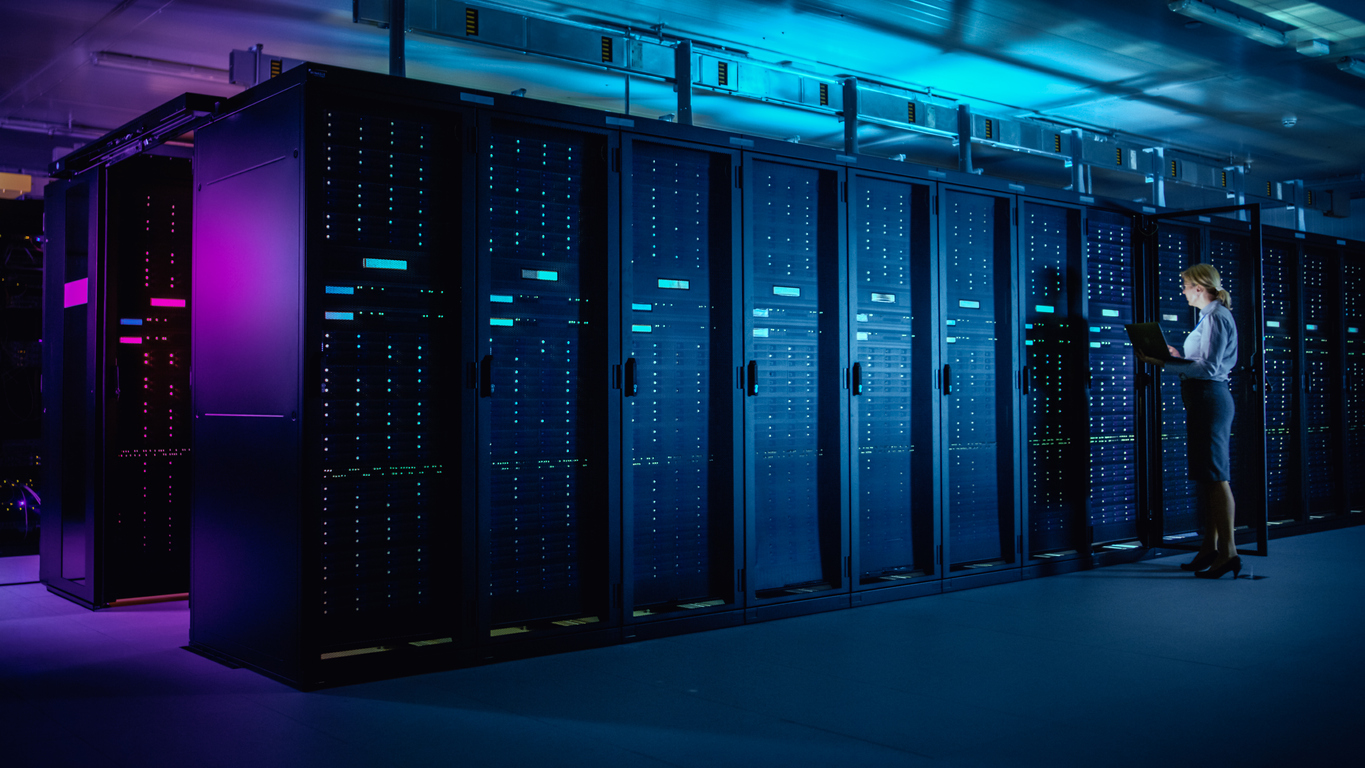Data Centres
HFCs, including R-134a and R-410A, and HFOs are widely used for data centre cooling. Compressors range from scrolls to high capacity centrifugal chillers, which have large refrigerant charges.
The safety (low toxicity and mildly or non-flammable) and performance properties of these fluorocarbon refrigerants make them particularly suitable for use in large chillers. Even though refrigerant losses are very low with modern well-designed chillers, HFOs with their very low GWPs provide further reductions in GHG emissions.

Energy use for data centres is one of the themes of the European Commission Communication ‘Shaping Europe’s digital future’ (19.2.2020 COM(2020) 67 final). ‘Yet it is also clear that the ICT sector also needs to undergo its own green transformation. The environmental footprint of the sector is significant, estimated at 5-9% of the world’s total electricity use and more than 2% of all emissions. Data centres and telecommunications will need to become more energy efficient, reuse waste energy, and use more renewable energy sources. They can and should become climate neutral by 2030.’
Large data centres use massive amounts of energy to process and store data. Similar quantities of energy can be required for cooling to maintain the required data operating temperature. The Internet of Things (IoT) cloud computing and smart technology are expanding data centre installations. Blockchain and high-frequency trading systems are processor and energy intensive. The large demand for data centre cooling drives the requirement for higher efficiency.
Free cooling is clearly the most energy efficient option, but due climatic conditions it cannot be used in all locations throughout the year, which means that most data centres have a close control air conditioning system to maintain the required temperature range particularly in summer. High system reliability and close temperature control are critical. Well-designed chillers when combined with a free cooling chiller, can deliver up to 98% free cooling for most European data centre hubs.
Waste heat from data centres can be utilised for local heating requirements for offices, facilities, greenhouses and housing. Some data centres, in Scandinavia, transfer the waste heat using heat pumps for district heating. For example, HFO-1234ze(E) is used for the heat pumps at a data centre in Finland to provide cooling for the data centre and utilise the waste heat. Where vapour compression cooling is used waste heat utilisation is more attractive due to the higher temperatures of the waste heat.


Indirect Thermosyphon Cooling can provide an efficient solution for data centres. It uses the waste heat from the data centre and a combination of gravity and a syphon effect, to drive a refrigeration cycle capable of operating without pumps or compressors, providing remarkable levels of energy efficiency. Systems have been designed for use with HFO refrigerants.
Free Cooling uses low external air temperatures to chill water and generate energy savings. It can take effect when the difference between the outside supply and return temperatures is as little as 1°C and reduces the need for mechanical cooling, Concurrent free-cooling maximises the part-load efficiencies when mechanical refrigeration compressors are operating. The use of temperature sensors and sequencer controls allows for cooling to be staged, ensuring a smooth transition from mechanical cooling to air free cooling.
Power usage effectiveness (PUE) is the ratio of total amount of energy used by a computer data centre facility to the energy delivered to computing equipment and describes how efficiently a computer data centre uses energy; specifically, how much energy is used by the computing equipment (in contrast to cooling and other overhead). An ideal PUE is 1.0. Free cooling opportunities can make a significant saving on energy use generating PUEs of 1.1 or below.